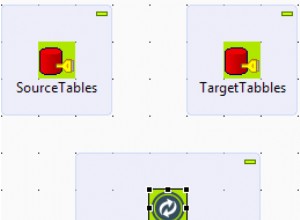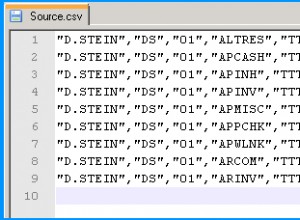Đầu tiên một số dữ liệu thử nghiệm:
create table seasons (seasonId int primary key
, "date" datetime not null unique
, tariffId int not null)
insert into seasons values (1, '2009-01-01', 1)
insert into seasons values (2, '2009-01-02', 1)
insert into seasons values (3, '2009-01-03', 2)
insert into seasons values (4, '2009-01-04', 3)
insert into seasons values (5, '2009-01-05', 3)
insert into seasons values (6, '2009-01-06', 1)
insert into seasons values (7, '2009-01-07', 1)
insert into seasons values (8, '2009-01-08', 3)
-- add a tarrif with a datespan larger than 2
insert into seasons values (9, '2009-01-09', 4)
insert into seasons values (10, '2009-01-10', 4)
insert into seasons values (11, '2009-01-11', 4)
Dựa trên câu trả lời của Dave Barker, trong các khung nhìn nội tuyến thêm row_number () để chúng ta biết giá trị nào là tối thiểu đầu tiên, giá trị nào là giá trị thứ hai, v.v. (Trên thực tế, vì một ngày không thể có nhiều hơn một biểu phí, chúng tôi không cần phải phân chia theo biểu thuế.)
SELECT MinValues.Seasonid, MinValues.Date, MaxValues.Date, MaxValues.tariffid
FROM (
SELECT *, row_number() over (partition by tariffId order by "date") as RN
FROM [dbo].[Seasons] tbl1
WHERE NOT EXISTS (SELECT *
FROM [dbo].[Seasons] tbl2
WHERE tbl1.seasonid - tbl2.seasonid = 1
AND tbl1.tariffId = tbl2.tariffId)) as minValues
JOIN (
SELECT *, row_number() over (partition by tariffId order by "date") as RN
FROM [dbo].[Seasons] tbl1
WHERE NOT EXISTS (SELECT *
FROM [dbo].[Seasons] tbl2
WHERE tbl2.seasonid - tbl1.seasonid = 1
AND tbl1.tariffId = tbl2.tariffId)) as maxValues
ON MinValues.TariffId = MaxValues.tariffId
and MinValues.RN = MaxValues.RN
order by MinValues.Date
Kết quả:
1 2009-01-01 00:00:00.000 2009-01-02 00:00:00.000 1
3 2009-01-03 00:00:00.000 2009-01-03 00:00:00.000 2
4 2009-01-04 00:00:00.000 2009-01-05 00:00:00.000 3
6 2009-01-06 00:00:00.000 2009-01-07 00:00:00.000 1
8 2009-01-08 00:00:00.000 2009-01-08 00:00:00.000 3
9 2009-01-09 00:00:00.000 2009-01-11 00:00:00.000 4




